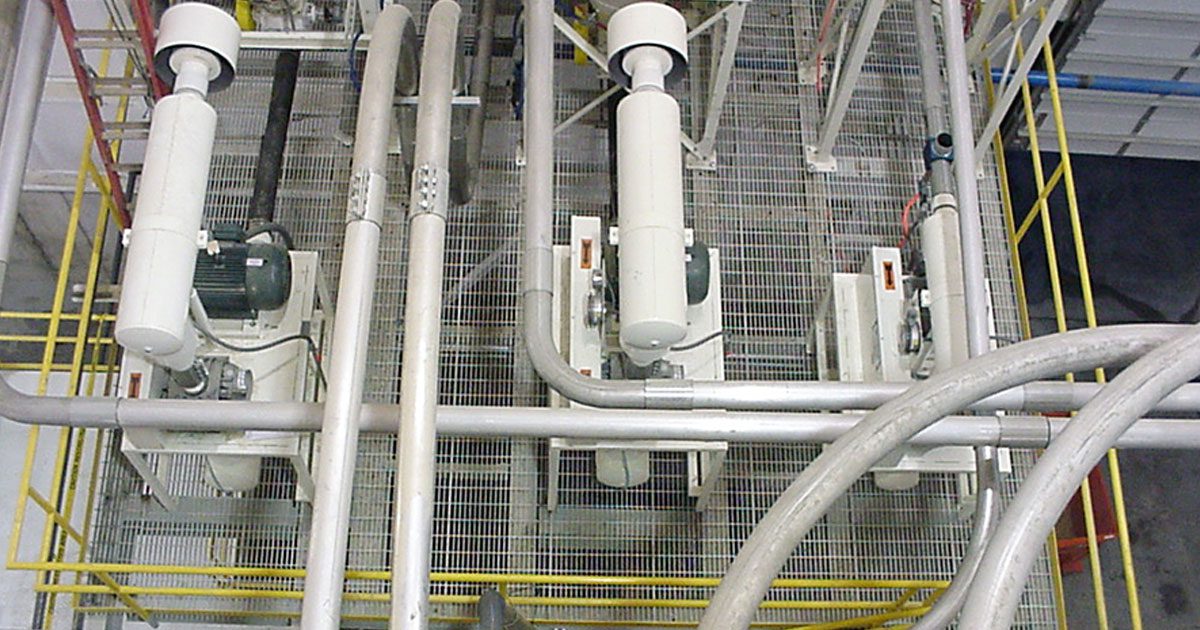

The best way to understand a material conveying system’s role in optimizing your plant’s operations is to better understand the gist of it.
A material conveying system is designed to transport materials, whether powders, granules or larger bulk materials, across various stages of unloading and storage, production and processing, bagging and palletizing.
The diversity of these materials presents unique challenges, from handling delicate powders without degradation to moving bulky items without causing bottlenecks. Each material type requires a specific approach in conveying to maintain integrity, prevent contamination and ensure efficient processing. A plant’s square footage, layout, and existing system equipment can dictate the size, design and technology of a material conveying system’s size, design and technology.
It's important to note that cutting-edge, efficiency-driving material conveying systems today are customized to the material being conveyed, your plant and your workforce.
Types of Material Conveying Systems
Delving into the two types, pneumatic conveying systems stand out for their ability to transport lightweight materials efficiently. These systems are divided into two categories:
On the other hand, mechanical conveying systems are more suited for heavier, bulkier materials. They come in various forms:
Selecting the Right Conveying System
Aligning the system with the operation's specific needs ensures efficiency, cost-effectiveness, and longevity of the equipment.
Choosing the right system is crucial to optimizing a plant’s efficiency, and the decision boils down to several factors, including:
To ensure the system is designed and sized for the most cost-effective way of conveying and packaging materials, test for flow characteristics, filling and convey design parameters and degradation in a real-time operational system.
Understanding Material Conveying Systems’ Key Components and Their Roles
Critical components of these systems, such as rotary valves, airlocks and blower packages, play vital roles in maintaining operational efficiency. Rotary valves help regulate the flow of material, airlocks maintain the pressure differential, and blower packages provide the necessary air flow.
Additionally, accessories like filters and separators are essential in maintaining the quality of the material, ensuring that it remains free from contaminants.
Looking at Innovations and Trends in Material Conveying
The field of material conveying is undergoing significant innovations, particularly in automation and AI integration. These innovations lead to smarter, more efficient systems capable of adapting to varying operational needs. Integrating IoT devices and sensors enhances real-time monitoring and control, leading to improved operational efficiency, reduced downtime, and overcoming labor shortage problems.
The selection of the right material conveying system is a critical decision that can significantly impact the efficiency and productivity of industrial operations. With advancements in technology and a deeper understanding of material characteristics, these systems are becoming more sophisticated and capable of handling a wide range of materials more efficiently.
Expert consultation and thorough research are the first steps to improving operations via a material conveying system. Magnum Systems’ team offers invaluable insights and solutions tailored to specific industrial needs.
Magnum Systems podcast series, AIM!
RELATED POSTS
The Importance And Challenges Of Onsite Installation In The Pneumatic Conveying And Packaging Industry
Innovation In The Automotive Industry With Pneumatic Conveying And Packaging Solutions
Common And Doozy Pneumatic Conveying Challenges With Joel Sawalich
Pioneering Pneumatic Conveying Of Minerals – A Magnum Systems Story